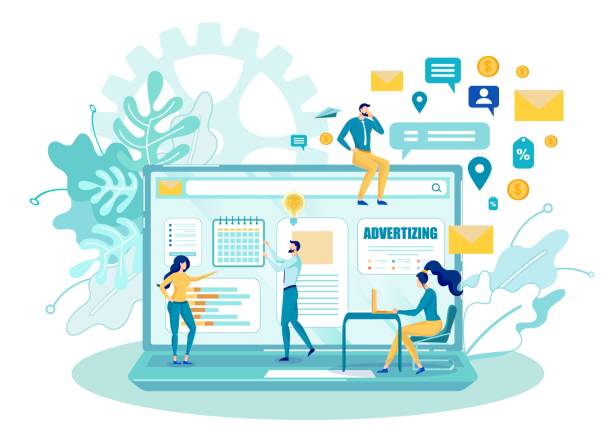The Importance and Necessity of Multilingual Website Design in Today’s World

In the age of globalization and the ever-expanding internet communication, multilingual website design is no longer just a competitive advantage, but has become an undeniable necessity for any business aiming to operate beyond its geographical borders.
This approach allows you to connect with more audiences worldwide and convey your message in their native language. The content of this section is explanatory and shows you why you should consider developing a web platform with multi-language support.
A single-language website, even if it offers the best products or services, only reaches a small fraction of the global market.
But with multilingual website design, new doors open up for you.
Suppose you have a product with sales potential in European and Asian countries; without a multilingual website, many potential customers won’t even know of your existence because they don’t understand your site’s language.
This lack of linguistic access can lead to countless lost business opportunities.
Therefore, to increase access and penetration in international markets, the process of multilingual website design should be at the core of your digital strategy. This doesn’t just mean translating content, but includes understanding cultural differences, international SEO, and localized user experience, all of which contribute to increasing conversion rates and customer loyalty.
Today, the importance of a multilingual site is absolutely clear for companies seeking global growth and development, and investing in it will yield long-term returns.
This is an essential step for a powerful international presence and responding to the diverse needs of users.
Ignoring this necessity means falling behind competitors who are rapidly expanding their global operations and focusing on multilingual site design and development to attract maximum audience.
This strategic decision not only leads to increased sales but also significantly helps strengthen your brand’s position in international markets.
The content of this article educates you about all dimensions of this process.
Did you know that 94% of users’ first impression of a business is related to its website design? With professional corporate website design by **Rasawb**, turn this first impression into an opportunity for growth.
✅ Attract more customers and increase sales
✅ Build credibility and trust in the audience’s eyes⚡ Get a free website design consultation!
Competitive Advantages and Profitability of Multilingual Website Design

One of the most important aspects of a multilingual website design strategy is understanding its competitive advantages.
This analytical and guiding section shows you how a website supporting multiple languages can differentiate you from your competitors.
Increased organic traffic is the first and most obvious advantage.
By targeting keywords in different languages and using international SEO, your chances of appearing in search engine results for international audiences dramatically increase.
This means attracting more and higher-quality visitors who are looking for your products or services and are more likely to convert into customers.
Second, improved user experience (UX).
Users prefer to interact with content in their native language; this increases trust, reduces bounce rates, and increases time spent on the site.
When users feel comfortable and understand the site’s language, the probability of them making a purchase, signing up, or using your services significantly increases, leading to higher conversion rates.
Third, strengthening international credibility and branding.
A multilingual website sends a clear message to global audiences that you are a serious, professional, and customer-centric business that respects their diverse needs.
This alone can be a significant factor in creating a competitive advantage, as trust is the cornerstone of any successful business.
Fourth, access to new markets and increased sales.
By opening the gates of language, new markets become accessible to you that were previously beyond reach.
This not only means increased revenue but also diversification of income sources and reduced dependence on a specific market, ensuring business stability in the long term.
Ultimately, investing in multilingual website design is a strategic investment for sustainable growth and long-term success in the global business environment. This approach helps you not only attract new customers but also increase the loyalty of existing ones and transform your brand into a global brand.
It can also significantly help you compete with larger, more established companies in global markets.
Challenges and Crucial Tips in Multilingual Website Design

The process of multilingual website design, while beneficial, also comes with challenges that must be addressed to achieve success.
This specialized and explanatory section examines these challenges and provides key solutions.
The first challenge is content and translation management. Ensuring high-quality translations, continuous content updates in all languages, and maintaining information consistency requires a strong strategy.
Using professional translators and content localization instead of merely literal translation is highly important to preserve the original message and brand tone in each language.
The second challenge is multilingual SEO.
Search engines must be able to crawl, index, and correctly rank different language versions of your site.
Proper use of hreflang tags, appropriate URL structure (subdomains, subdirectories, or separate domains), and keyword research for each language are among the necessities, as any mistake in these can lead to your site not being seen in target markets.
Third, technical and infrastructural challenges. The content management system (CMS) must have multilingual support capabilities, and the server must be able to handle international traffic effectively.
Also, maintaining site loading speed in different languages, especially for audiences with weaker internet connections in more remote areas, is important and requires a suitable CDN.
Fourth, cultural and design issues.
Colors, images, icons, and even text direction (e.g., right-to-left for Persian and Arabic) must be compatible with the culture of each language’s audience.
Ignoring these points can lead to an undesirable user experience or even misunderstanding and damage your brand’s credibility. Fifth, technical support and maintenance.
Ensuring that your support team can answer user questions in different languages is vital for customer satisfaction and requires hiring or training specialized personnel.
These challenges indicate that multilingual website design requires careful planning and principled execution.
For success in multilingual website design, one must simultaneously pay attention to these technical and cultural details and adopt a comprehensive approach.
| Approach | Example | Advantages | Disadvantages |
|---|---|---|---|
| Subdirectories | example.com/en/, example.com/fa/ |
Easy for SEO management, lower cost, retains main domain authority | Requires precise folder structure, may appear less local, harder for geographic targeting |
| Subdomains | en.example.com, fa.example.com |
Easier hosting and CDN management, feels more local, easier server separation | May dilute main domain SEO authority, requires more complex DNS settings |
| Top-Level Domains (TLDs) | example.co.uk, example.de |
Very local and authoritative, best for local SEO and trust-building | High cost, harder to manage, requires independent and separate content strategy |
Choosing the Right Content Management System (CMS) for a Multilingual Site
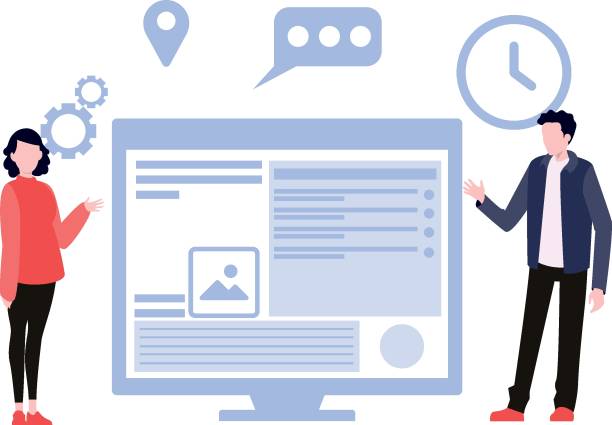
One of the key decisions in multilingual website design is choosing a Content Management System (CMS) that can effectively meet your multilingual needs.
This guiding and educational section helps you understand the available options and make the best choice.
WordPress, with plugins like WPML or Polylang, is one of the most popular and flexible options for multilingual sites.
These plugins allow for easy content management in different languages, theme and plugin translation, and support for hreflang tags.
The main advantage of WordPress is its large developer community, abundant educational resources, and ease of use for non-technical users.
This CMS is very suitable for small to medium-sized projects.
Drupal is another powerful CMS that natively offers advanced multilingual capabilities.
Drupal is a very suitable option for larger and more complex projects requiring flexibility, scalability, and high security, but learning and using it might be more challenging for beginners and usually requires deeper technical knowledge.
Joomla also has internal multilingual capabilities and is considered an option between WordPress and Drupal, offering a balance between ease of use and power.
Choosing the right CMS for multilingual site development depends on your budget, project scale, technical expertise, and specific needs.
Additionally, e-commerce platforms like Shopify and Magento also provide options for setting up multilingual sites for online stores with their plugins and native capabilities.
For very specific projects, custom website development with dedicated coding can also be an option, although it demands more cost and development time.
Before making a final decision, be sure to list your requirements and carefully review the multilingual capabilities of each CMS to ensure its full compatibility with the goals of your multilingual website design project.
This stage of multilingual website design is crucial and can play a significant role in the success or failure of your project, influencing future maintenance and development costs.
Are you unhappy with your e-commerce site’s low sales?
Rasawb is your solution for having a professional and high-selling e-commerce site.
✅ Significant increase in sales and revenue
✅ Easy and enjoyable shopping experience for customers
⚡ Get a free consultation from Rasawb now!
Multilingual SEO Strategies and International Optimization
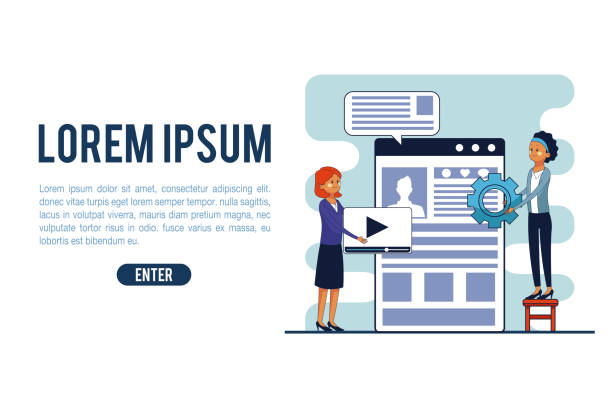
After multilingual website design, the most crucial step to ensure its visibility in search engines and attract global audiences is to implement multilingual SEO strategies.
This specialized and analytical section teaches you how to optimize your site for search engines in different languages.
Correct use of hreflang tags is a fundamental principle of multilingual SEO.
These tags help search engines like Google display the correct version of a page based on the user’s language and geographical region, preventing duplicate content issues.
Incorrect implementation of these tags can lead to loss of ranking and traffic.
The next step is keyword research for each language.
Keywords popular in one language may not have the same meaning or popularity in another.
Separate keyword research must be conducted for each language and region, and content optimized accordingly.
This also includes understanding cultural and dialectal differences and requires specialized tools and local market analysis.
Proper URL structure is also crucial; as mentioned in the previous table, the choice between subdirectories, subdomains, or top-level domains can impact international SEO.
Each has its advantages and disadvantages and should be chosen based on business goals, project scale, and long-term SEO strategy.
Internal and external link building for each language version is also important.
Try to attract links from authoritative and relevant sites in each language to your site.
Furthermore, optimizing content for search engines in countries where local search engines are dominant (such as Yandex in Russia or Baidu in China) requires different strategies that may go beyond Google’s algorithms.
Continuous monitoring of SEO performance using tools like Google Search Console for each language version helps you identify and fix potential issues and stay aware of changes in search algorithms.
A successful multilingual website design requires a strong and continuous SEO strategy to ensure your content reaches target audiences worldwide and is displayed optimally in search results.
This aspect of multilingual website development is highly specialized and requires deep knowledge.
User Experience (UX) and Localization in Multilingual Website Design

In multilingual website design, attention to User Experience (UX) and localization goes beyond mere text translation.
This guiding and educational section shows you how to provide an exceptional user experience for your international users.
The first step is the ability to select a language in an easy and accessible way. The Language Switcher should be placed in a prominent and recognizable location, usually in the header or footer of the site, with a clear globe icon or a dropdown menu.
Using full language names instead of flags is recommended, as flags do not always accurately represent the language and can cause misunderstanding (e.g., the US flag doesn’t only refer to English, and the Spanish flag doesn’t refer to Spanish in all countries).
Second, attention to text direction. For languages like Persian, Arabic, and Hebrew that are read from right-to-left (RTL), the entire site layout, including columns, menus, forms, image placement, and even buttons, must be adjusted to this direction.
This requires specific CSS and HTML design that should be considered from the outset.
Third, content localization. Localization involves adapting content to the norms, expressions, culture, values, and even humor of a specific region.
This goes beyond word-for-word translation and includes numbers, units (e.g., metric or imperial), date and time formats, currency, and even colors and images.
For example, an image acceptable in one culture might be offensive or inappropriate in another.
This localization process is very important and can make the difference between success and failure.
Fourth, site loading speed. International users may have different internet speeds.
Optimizing images, using a CDN (Content Delivery Network) to cache content on servers closer to users, and compressing codes are essential to ensure fast site loading worldwide.
Fifth, attention to contact forms and support. Ensuring that website forms are correctly displayed in different languages and that the support team can provide services to the languages required by users is crucial and helps increase customer satisfaction and loyalty.
These factors together contribute to creating a successful multilingual website design that is not only technically efficient but also culturally connects with users and creates a positive user experience.
A suitable multilingual website design attracts and retains customers and leads to higher conversion rates.
Content Management and Translation Processes in Multilingual Websites
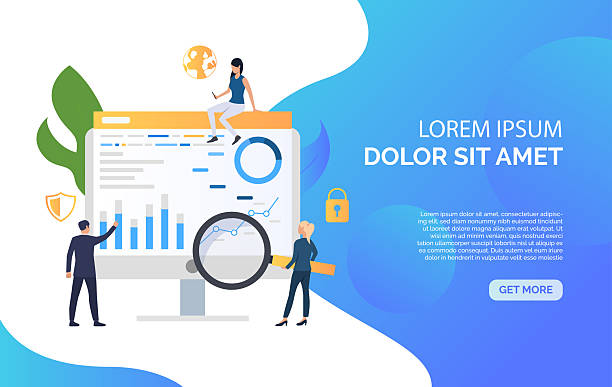
At the heart of multilingual website design lies efficient content management and translation processes.
This explanatory and specialized section examines how to organize these processes to ensure your content is accurate, up-to-date, and high-quality across all languages.
The first step is choosing the translation method. Do you use in-house translators? Do you work with professional translation agencies? Or a combination of both? Machine translation (like Google Translate) can be used for simple, non-sensitive content, but for vital and marketing content, investing in human translation and professional localization is essential.
This ensures that your message is conveyed correctly, and the appropriate tone and style for each culture are maintained, preventing any misunderstandings.
Second, establishing a clear translation workflow. This workflow should include steps for content collection, submission for translation, proofreading by native speakers, publishing, and continuous updates.
Using Translation Management Systems (TMS) such as MemoQ or Trados can automate and streamline this process.
These tools enable the management of glossaries, translation memories, and collaboration between different teams, which helps maintain terminology consistency and reduce translation costs over time.
Third, strategic content updates. When primary content in one language is updated, it must be ensured that the translated versions are also quickly and accurately updated to avoid outdated information and maintain site consistency.
This helps preserve information integrity and prevent user confusion, and is also important for SEO.
Fourth, testing and feedback. After content is translated and published, it is essential that the translated versions are reviewed by native speakers to ensure their accuracy, fluency, and cultural appropriateness.
User feedback can also help identify issues and continuously improve translation quality, and is crucial for questionable content or sensitive material.
With careful planning and the use of appropriate tools, content and translation management in your multilingual website design project can become a smooth and efficient process that contributes to your site’s long-term success and maintains your brand’s global reputation.
| Translation Method | Advantages | Disadvantages | Recommended Use |
|---|---|---|---|
| Machine Translation | High speed, very low cost, ability to process large volumes of content | Low accuracy, lack of understanding of cultural nuances and tone, unprofessional quality, potential for significant errors | Internal content, non-sensitive and non-marketing texts, initial translation for subsequent editing |
| Human Translation | High accuracy, maintains tone and culture, professional quality, deep localization, understanding of content and purpose | High cost, time-consuming, requires project management and coordination with translators | Marketing, legal, technical, user interface content, vital and sensitive brand content |
| Hybrid Translation | Combines speed and quality, better cost control, uses TM tools and AI | Requires specialists for post-editing after MT, complexity in workflow management | Large projects with limited budget, need for balance between speed and quality, repetitive content with minor changes |
Security and Maintenance of a Multilingual Site
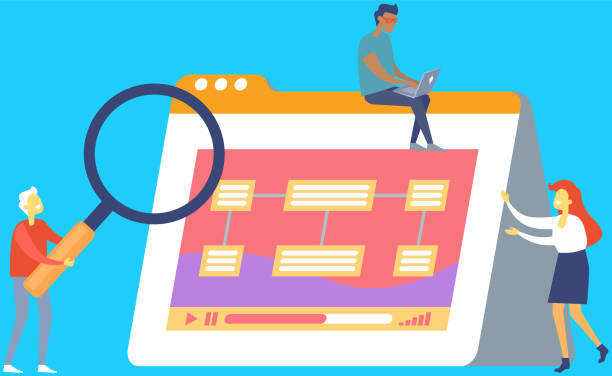
Just like any website, continuous security and maintenance are of high importance in multilingual website design, but with its own specific complexities.
This specialized and informative section addresses special security and maintenance aspects that must be considered for a multilingual site.
The first point is regular updates of CMS, themes, and plugins. Given that multilingual sites usually use more plugins for language management, the risk of security vulnerabilities also increases.
Therefore, it is crucial to always use the latest stable versions and apply security patches quickly to prevent potential cyber attacks.
Using HTTPS (SSL certificate) for all domains and subdomains related to different language versions is essential.
This is vital not only for user data security and communication encryption but also positively impacts site SEO and builds user trust.
Second, regular and automatic backups. Since a multilingual site has a larger volume of content and stores sensitive data, data loss can be catastrophic.
Planning for regular backups of the database and site files, and storing them in secure locations off the main server, is a crucial preventive measure.
Third, monitoring traffic and identifying suspicious activities. Multilingual sites may be more frequently targeted by cyber attacks, especially if they use languages from regions with higher security risks.
Security monitoring tools, Web Application Firewalls (WAF), and Intrusion Detection Systems (IDS) can help in identifying and blocking attacks.
Fourth, managing permissions and access rights. If multiple users or translators have access to the site’s admin panel, the access level of each individual must be carefully configured (the principle of least privilege) to prevent unintended changes or unauthorized access to information.
Fifth, performance review and continuous optimization. Site loading speed in different geographical regions and for various languages should be regularly checked.
Using a CDN to serve content from the closest server to the user, to improve speed.
Also, compliance with data privacy laws such as GDPR (for European users) or CCPA (for California users) is very important for multilingual sites operating in multiple regions.
A secure and regularly maintained multilingual website design builds user trust and ensures the long-term sustainability of your business, preventing legal and security issues.
Did you know that the first impression customers have of your company is your website? With a powerful corporate website from Rasawb, multiply your business’s credibility!
✅ Exclusive and eye-catching design tailored to your brand
✅ Improved user experience and increased customer attraction
⚡ Get a free consultation now!
The Future of Multilingual Website Design and Emerging Trends
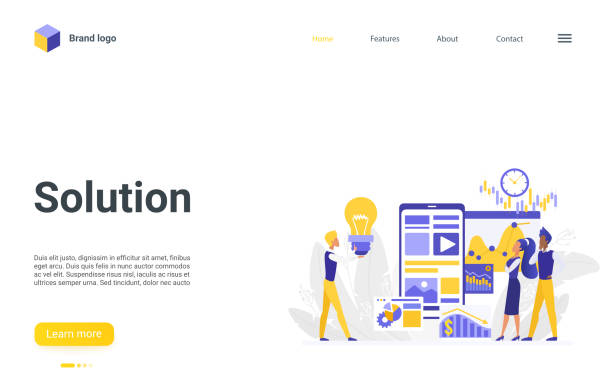
The world of multilingual website design is constantly evolving and adapting to new technologies.
This analytical and engaging section explores emerging trends and the future outlook in this field.
One of the most important trends is the significant advancements in Artificial Intelligence (AI) and Neural Machine Translation (NMT). These technologies are rapidly improving the accuracy and fluency of translations and are capable of better understanding linguistic and cultural nuances.
Although they cannot yet fully replace human translators, they serve as powerful assistive tools for generating initial drafts, translating less critical content, or even helping with the localization of visual elements.
The integration of AI with SEO is also a growing trend that can play a significant role in optimizing multilingual sites, including in keyword analysis, intelligent content generation, and personalization of user experience.
Second, the growth of voice search and smart assistants. With the increasing use of assistants like Google Assistant, Alexa, and Siri, SEO for voice search in different languages gains more importance.
This requires an understanding of spoken patterns and conversational queries in each language, which can necessitate different approaches for multilingual website design, for example, focusing on longer and more conversational keywords.
Third, content personalization based on language and region. Beyond mere translation, websites are moving towards providing fully personalized content for each user, based on their language, location, cultural preferences, browsing history, and even local weather.
This can elevate the user experience to unprecedented levels and lead to deeper brand engagement.
Fourth, increased attention to emerging markets. With the growth of the internet in countries previously less considered, multilingual website design will move towards supporting less common languages and even local dialects to cover larger segments of the world’s population.
These developments show that multilingual website design is not only a current need but also a dynamic field with numerous opportunities for innovation and growth.
Awareness of these trends can help you plan for the future of your business, stay ahead of competitors, and establish a strong presence in the global market.
Monitoring, Analysis, and Continuous Improvement of a Multilingual Site

After multilingual website design and launch, the work is not over.
To ensure long-term effectiveness and efficiency, continuous monitoring, analysis, and improvement are vital.
This guiding and educational section shows you how to monitor and optimize the performance of your multilingual site.
The first tool is Google Analytics. Using this tool, you can track traffic for each language version, user behavior (such as bounce rate, time on site, and pages visited), traffic sources, and even conversions, broken down by language and geographical region.
This information helps you identify the strengths and weaknesses of each language version and adjust your marketing strategies based on real data.
Second, using Google Search Console for each language version. This tool allows you to monitor page index status, crawl errors, keywords users used to find your site, and site performance in search results for each language.
This is essential for improving multilingual SEO and helps identify technical or content issues.
Third, collecting user feedback. Establishing mechanisms to receive feedback from users in different languages, such as contact forms, in-site surveys, or live chat support, can provide valuable information about UX problems, translation quality, or unmet user needs.
This feedback serves as challenging content for future site improvement and development. Fourth, A/B testing for improvement. A CTA (Call to Action) might perform well in one language but not in another.
A/B testing for various site elements in different languages (such as headings, buttons, images) can help you find the optimal design and content for each market and improve conversion rates.
Fifth, competitor analysis and market trends. Always monitor your competitors in international markets and stay informed about the latest trends in multilingual website design and international marketing strategies.
This continuous process of monitoring and improvement ensures that your multilingual website design evolves over time, always meets the needs of your global audience, and remains flexible to market changes.
This is a vital approach for sustainable success in the global digital space and helps maintain your competitive edge.
Frequently Asked Questions
| Question | Answer |
|---|---|
| What is a multilingual website? | It is a website whose content is available to users in several different languages. |
| Why should we design a multilingual site? | To expand access to international audiences, increase site traffic, improve SEO in target markets, and provide a better user experience for non-Persian speaking users. |
| What are the main methods for implementing a multilingual site? | Using subdomains (e.g., en.mysite.com), using subdirectories (e.g., mysite.com/en/), and using separate domains for each language (e.g., mysite.com and mysite.de). |
| Which implementation method is better for SEO? | Generally, using subdirectories (language folders) is often recommended due to the transfer of main domain authority to other languages. |
| What is the Hreflang tag and what is its use? | It is an HTML tag or HTTP Header that informs search engines which version of a page is suitable for which language or geographical region. This tag prevents Duplicate Content issues and improves SEO. |
| How is a Language Switcher designed? | Usually, with a dropdown menu, button, or flag in the site’s header or footer, which allows the user to select their preferred language. |
| Is automatic (machine) translation for a multilingual site suitable? | No, machine translation usually has low quality and many errors that can damage the site’s credibility. Human translation or a combination of human translation and machine post-editing is recommended. |
| What are the most important SEO tips in multilingual website design? | Correct use of the Hreflang tag, having an appropriate URL structure for each language, translating titles and meta descriptions, translating core content, internal linking between related language versions. |
| Should all site content be translated? | It depends on the strategy. Usually, the main and important content of the site should be translated. Less important sections or blogs may not require full translation. |
| What are the main challenges in multilingual website design? | Managing content in different languages, translation costs, technical issues related to URLs and language tags, template compatibility with right-to-left (RTL) languages like Persian and Arabic, and managing multilingual SEO. |
And other services of Rasa Web Advertising Agency in the field of advertising
Investigating the impact of discounts and special offers on attracting new customers
The role of social networks in strengthening the presence of classified ads websites
How to use blogs and educational content to strengthen ads?
Investigating methods to increase brand credibility on classifieds websites
How to use targeted advertising to attract specific customers?
And over hundreds of other services in the field of online advertising, advertising consulting, and organizational solutions
Online Advertising | Advertising Strategy | Advertorial
🚀 Ready to transform your business in the digital world? Rasa Web Afarin Digital Marketing Agency, specializing in comprehensive services including custom website design, professional SEO, and targeted advertising campaigns, is your guide to success in the online space. With us, your brand will shine at its peak.
📍 Tehran, Mirdamad Street, next to Bank Markazi, Southern Kazeroon Alley, Ramin Alley, No. 6

